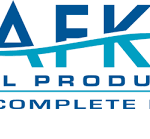Do you enjoy your pool, but don’t love the chlorine chemicals that you have to add to the pool?
Consider converting your existing in-ground pool to an environmentally friendly alternative with a salt generating system. Saltwater swimming pools have been around in other parts of the world for years and are becoming even more popular in the United States.
How Saltwater Pools Work
By adding a chlorine generator to your pool’s plumbing system, the generator works with salt added to the water to produce the active chlorine required to keep your pool water clean, so you don’t need to continually add chlorine and other chemicals. You don’t have to specifically do anything prior to the installation of the salt system, though keeping your water in balance is always recommended.
The conversion will start by installing the generator to your pool. Then you’ll need to add salt to your pool. The amount of salt your pool requires will depend on the size of your pool, however a working estimate is 50 pounds of salt per 1,200 gallons of capacity. The chlorine generator system will be installed in your pool’s water return lines (after the filter and heater) by cutting into the return lines and installing PVC piping to run water through the chlorine generator then back into the return line. The generator needs a power source, so it will be wired into the pool pump circuit so that the generator turns on and off at the same times as the pool pump.
Once installed, turning on the pump circulates the salt water through the system, including the chlorine generator. Through an electrolysis process, the salt molecules (sodium chloride) are separated into sodium and chlorine. Concurrently, a hydrogen atom is freed from the water molecules.
Know that the hydrogen and chloride atoms combine to form sodium hypochlorite (chlorine) that actually purifies the water in your pool.
After sanitizing your pool water, the chlorine chemically recombines with sodium, turns back into salt, and the process begins all over again.
Taking Care of Your Saltwater Pool
Realize that maintaining chlorine generating systems is simple. Modern systems test for salt levels and have indicator lights to let you know if salt levels need to be adjusted.
Consider that many chlorine generating systems are self-cleaning as well, using a built-in polarity reversal function to clean themselves.
Test the salt level in your water periodically (using salt test strips available at pool supply stores).
We recommend:
 |
IntelliChlor® Salt Chlorinator uses common table salt to produce all the chlorine a pool needs, safely, effectively, and automatically. Same sanitation performance as manual chlorine addition without the drawbacks. No need for customers to buy, transport and store chlorine compounds.
Features
- Full diagnostic capabilities, including cell life tracking that communicates remaining hours of cell life in real-time. Captures all performance data daily (production settings, hours of operation, chlorine output, cell cleaning cycles, salt readings, and water temperature averages)
- Push-button operation and easy-to-view displays enable fast checking of salt levels, cell cleanliness, sanitizer output, and water flow
- Automatic shut-off feature protects the unit and prolongs cell life under low water temperature conditions
- On-time cycling prevents calcium and scale build-up to maximize cell life
- Ability to communicate with IntelliTouch®, EasyTouch®, and SunTouch® Automation Systems
- Certified to UL 1081 standard for safety
- NSF approved
- Health Canada approved











